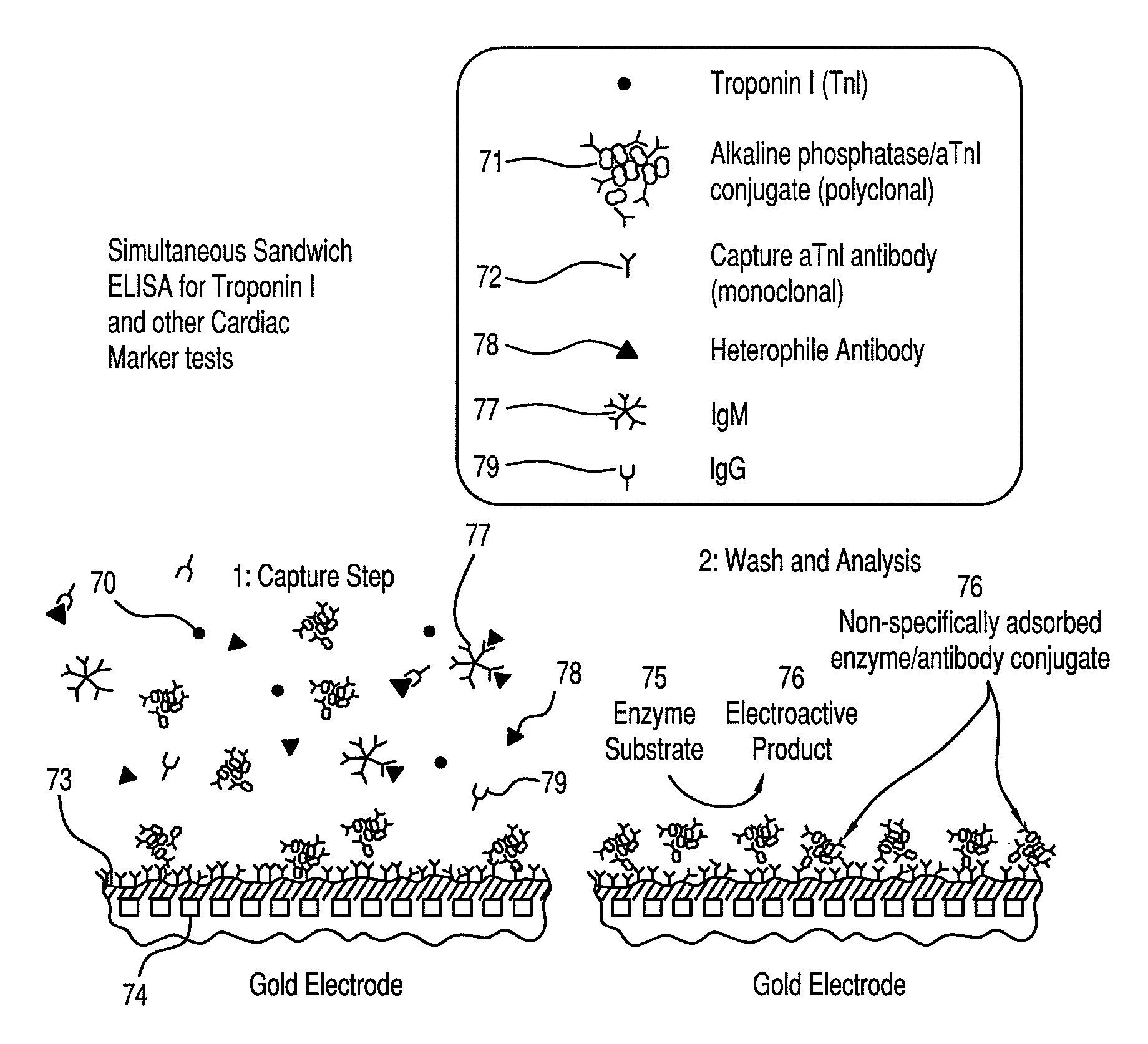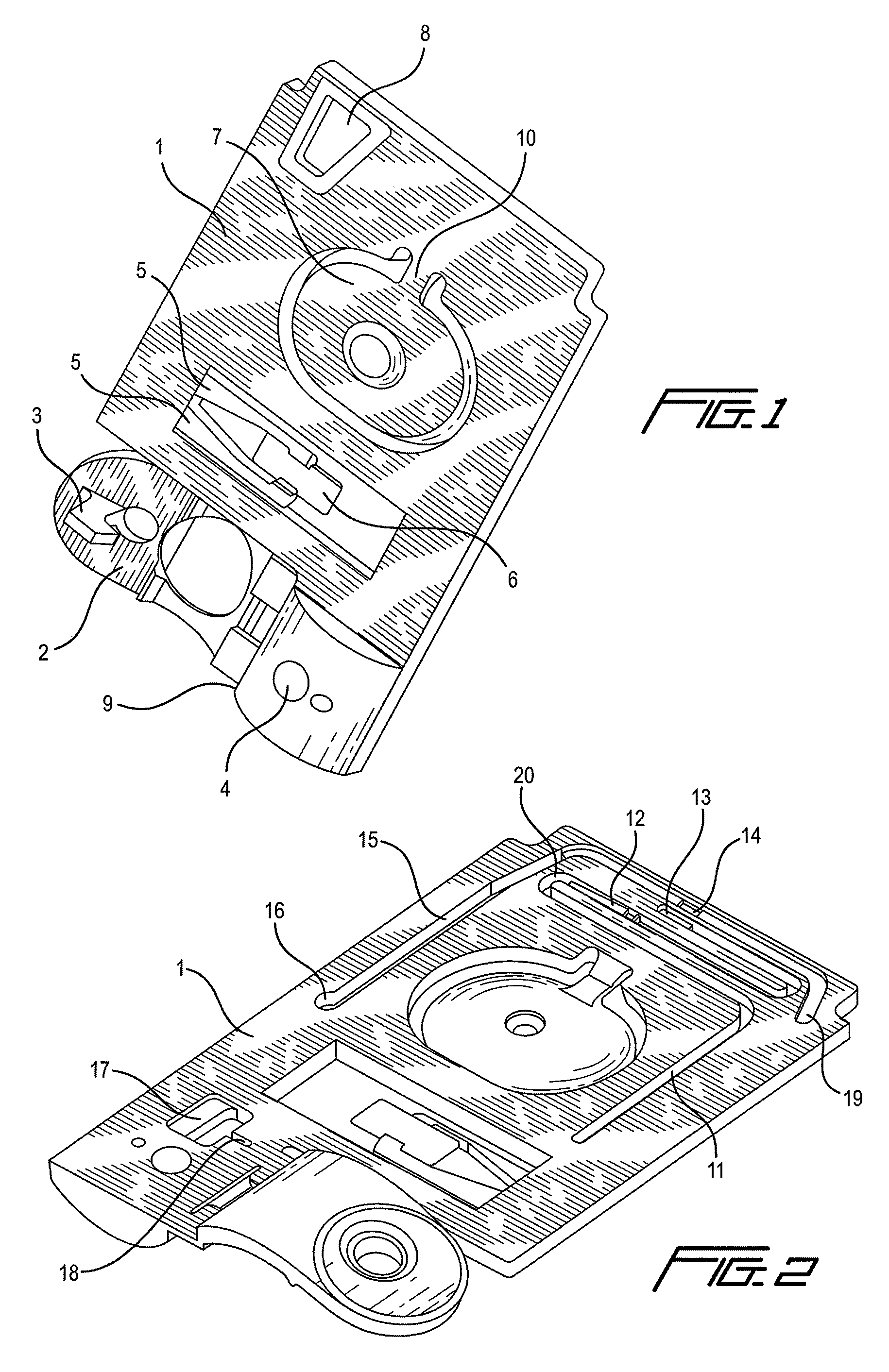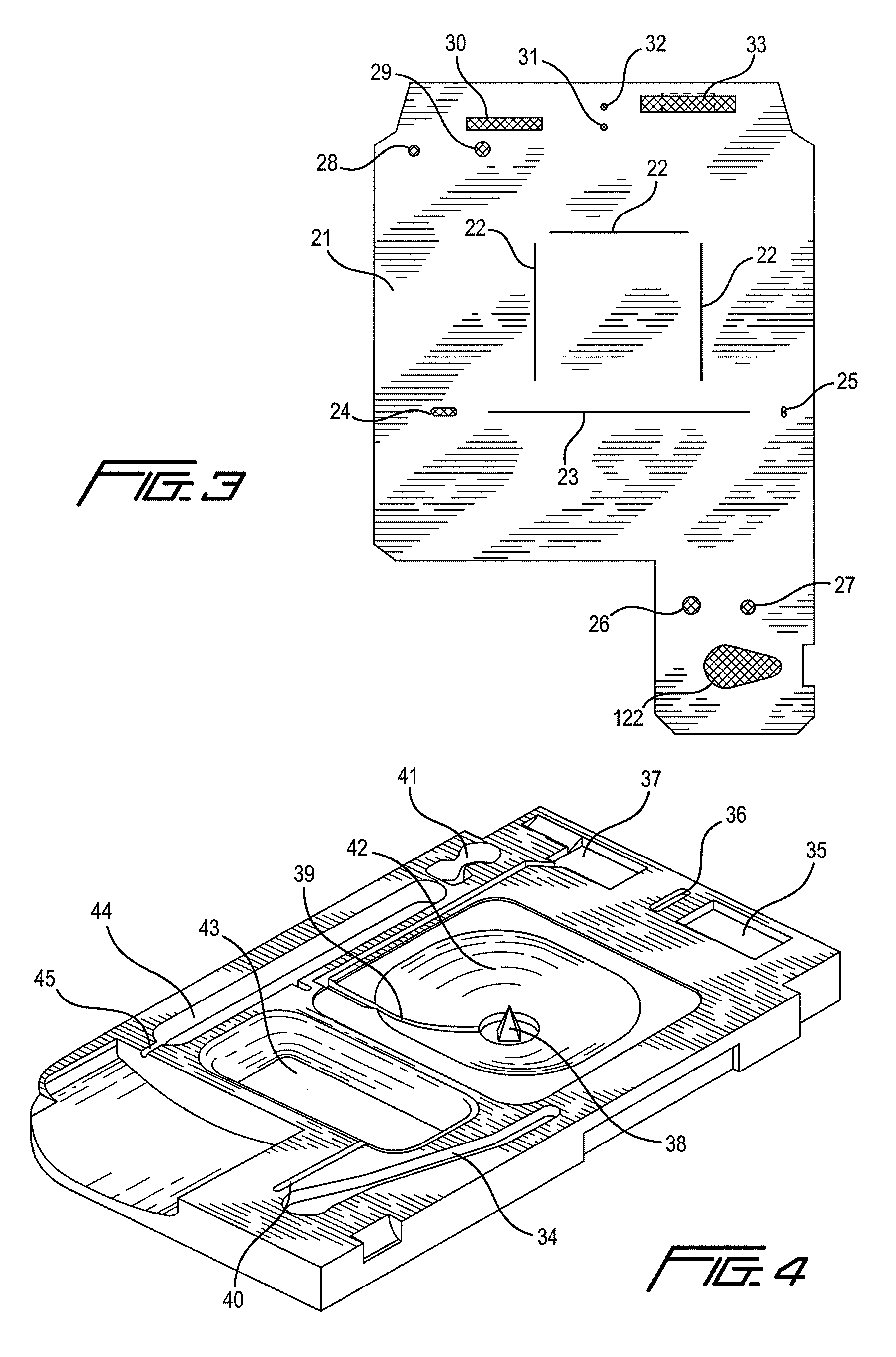Amelioration of heterophile antibody immunosensor interference
a heterophile antibody and immunosensor technology, applied in the field of reducing or eliminating heterophile antibody immunosensor interference, can solve the problems of heterophile antibody interference, delay can be detrimental to a patient's condition or prognosis, and increase the cost of laboratory testing analysis, so as to reduce the interference of heterophile antibodies
- Summary
- Abstract
- Description
- Claims
- Application Information
AI Technical Summary
Benefits of technology
Problems solved by technology
Method used
Image
Examples
example 1
[0145]FIG. 7 illustrates the principle of an amperometric immunoassay according to specific embodiments of the present invention for determining the presence and amount of troponin I (TnI), a marker of cardiac function. A blood sample was introduced into the sample holding chamber of a cartridge of the present invention, and was amended by dissolution of a dry reagent coated into the sample holding chamber. The dry reagent includes IgM 77, as described above, which upon dissolution into the sample selectively binds to complementary heterophile antibodies 78 that may be contained in the sample. In other embodiments, not shown, fragments derived from IgM may be employed to sequester heterophile antibodies contained in the sample. As shown, the dry reagent also comprises IgG 79, which also selectively binds to complementary antibodies 78 after dissolution into the sample. In other embodiments, fragments derived from IgG may be employed to sequester heterophile antibodies contained in t...
example 2
[0163]With respect to the method of use of a cartridge, an unmetered fluid sample is introduced into sample holding chamber 34 of a cartridge, through sample entry port 4. Capillary stop 25 prevents passage of the sample into conduit 15 at this stage, and holding chamber 34 is filled with the sample. Lid 2 or element 200 is closed to prevent leakage of the sample from the cartridge. The cartridge is then inserted into a reading apparatus, such as that disclosed in U.S. Pat. No. 5,821,399 to Zelin, which is hereby incorporated by reference. Insertion of the cartridge into a reading apparatus activates the mechanism which punctures a fluid-containing package located at 42 when the package is pressed against spike 38. Fluid is thereby expelled into the second conduit, arriving in sequence at 39, 20, 12 and 11. The constriction at 12 prevents further movement of fluid because residual hydrostatic pressure is dissipated by the flow of fluid via second conduit portion 11 into the waste ch...
example 3
[0168]Referring now to FIG. 15, there is shown a top view of an immunosensor cartridge. Cartridge 150 comprises a base and a top portion, preferably constructed of a plastic. The two portions are connected by a thin, adhesive gasket or thin pliable film. As in previous embodiments, the assembled cartridge comprises a sample holding chamber 151 into which a sample containing an analyte of interest is introduced via a sample inlet 167. A metered portion of the sample is delivered to the sensor chip 153, via the sample conduit 154 (first conduit) as before by the combined action of a capillary stop 152, preferably formed by a 0.012 inch (0.3 mm) laser cut hole in the gasket or film that connects the two portions of the cartridge, and an entry point 155 located at a predetermined point within the sample holding chamber whereby air introduced by the action of a pump means, such as a paddle pushing upon a sample diaphragm 156. After contacting the sensor to permit binding to occur, the sa...
PUM
| Property | Measurement | Unit |
|---|---|---|
| concentration | aaaaa | aaaaa |
| concentration | aaaaa | aaaaa |
| concentration | aaaaa | aaaaa |
Abstract
Description
Claims
Application Information
 Login to View More
Login to View More - R&D
- Intellectual Property
- Life Sciences
- Materials
- Tech Scout
- Unparalleled Data Quality
- Higher Quality Content
- 60% Fewer Hallucinations
Browse by: Latest US Patents, China's latest patents, Technical Efficacy Thesaurus, Application Domain, Technology Topic, Popular Technical Reports.
© 2025 PatSnap. All rights reserved.Legal|Privacy policy|Modern Slavery Act Transparency Statement|Sitemap|About US| Contact US: help@patsnap.com



